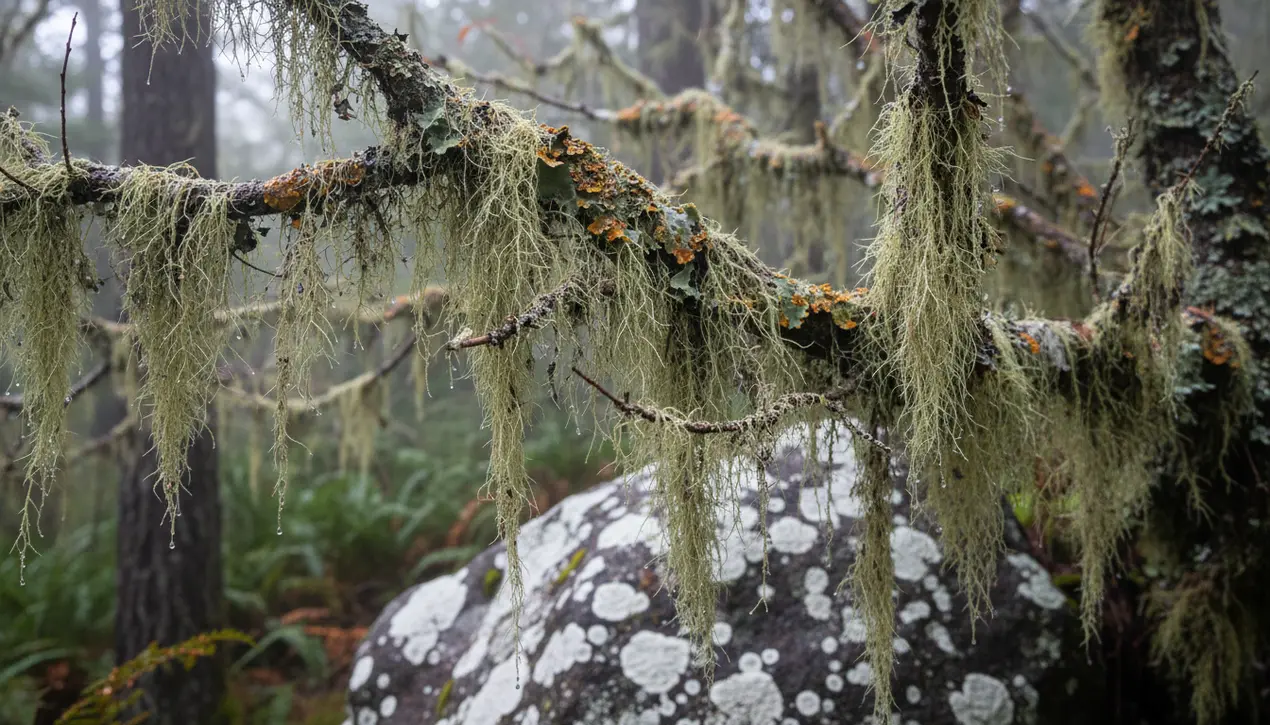
SciencebiologyEvolution and Ecology
How to Be a Lichen: Adaptive Strategies from Nature
RA
Rachel Adams
2 hours ago7 min read4 comments
As a biologist who has spent years documenting the intricate tapestries of life in ecosystems from the Alaskan wilderness to the rural byways of Ireland, I see in the humble lichen not merely a biological curiosity but a profound lesson in ecological resilience and symbiotic survival. That childhood wonder, those magical green garlands of Usnea longissima draping from pine trees, is a gateway to understanding one of Earth's most successful and overlooked life forms—a kingdom of over 20,000 known species, a biodiversity nearly twice that of the entire class of birds.A lichen is not a single organism but a masterclass in mutualism, a stable symbiotic association between a fungus and a photosynthetic partner, usually algae or cyanobacteria. This partnership is the cornerstone of its global success, allowing it to colonize the most inhospitable terrains, from arid deserts to frozen tundra, acting as a pioneer species that literally creates soil from bare rock.The fungal partner provides the structure, a protective home, and absorbs water and minerals, while the algal cells, nestled safely within, harness sunlight to produce carbohydrates for both. This is not a casual cooperation but a deeply integrated existence, a fusion so complete it forms a new composite organism with its own unique identity and name.The ecological implications are staggering. Lichens are critical bio-indicators; their presence or absence tells a silent, powerful story about air quality, as they are exquisitely sensitive to pollutants like sulfur dioxide.Their decline in an area often serves as an early-warning system for environmental degradation long before it becomes apparent to us. Furthermore, they play a foundational role in nutrient cycling, fixing atmospheric nitrogen in forms usable by other plants and initiating the slow, patient process of primary succession that builds entire ecosystems from barren ground.In an era of accelerating climate change and habitat fragmentation, the lichen’s adaptive strategy—collaboration over competition, resilience through integration—offers a powerful metaphor and a practical blueprint. While we engineer complex technological solutions to environmental crises, these ancient organisms have perfected the art of thriving through interdependence, demonstrating that the most robust systems are often built not on dominance, but on durable, life-sustaining partnerships. Their quiet persistence on stone walls and ancient trees is a testament to a survival strategy honed over millions of years, a strategy from which our own species, grappling with its place in the natural world, has much to learn.
#lichen
#biology
#nature
#human adaptation
#featured
#resilience
#symbiosis
#ecology
Stay Informed. Act Smarter.
Get weekly highlights, major headlines, and expert insights — then put your knowledge to work in our live prediction markets.
Related News
Comments
Loading comments...
© 2025 Outpoll Service LTD. All rights reserved.